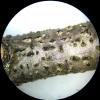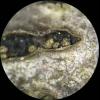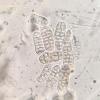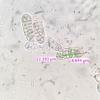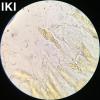
14-11-2025 16:26
 Marian Jagers
Marian Jagers
Hello everyone, On dead wood of Cytisus scoparius

17-11-2025 21:46
Philippe PELLICIERBonjour,Récolté sur bois pourrissant de feuillu

20-11-2025 14:14
Mick PeerdemanFound on the leaves of 'Juglans regia' in the Neth

20-11-2025 13:07
Mick PeerdemanIn January i found these black markings on the dea

20-11-2025 12:38
Mick PeerdemanDear all,Last week i stumbled upon a leaf of ilex

19-11-2025 23:21
 carl van den broeck
carl van den broeck
Dear guestIn Waardamme, Belgium, I found dozens of

19-11-2025 20:51
 Andreas Millinger
Andreas Millinger
Good evening,found this species on a felled trunk

19-11-2025 13:04
 Bruno Coué
Bruno Coué
Bonjour,je sollicite votre avis pour la récote
Spores:
17.5-26.2 x 6.3-8.9µm
Me 21.7 x 7.9µm
Q 2.1-3.2
Qe 2.8
N=24
Hyaline, occasionally allantoid, rounded ends. They do not appear to bud.
(3)7(8) septate, with multiple longitudinal septa.
I have tried to key it out using Jaklitsch, W. M., & Voglmayr, H. (2014). "Persistent hamathecial threads in the Nectriaceae, Hypocreales: Thyronectria revisited and re-instated" but without much luck.
Any help would be appreciated.
Thank you in advance.
Ethan

it's from the group around T. zanthoxyli, but which one...
- Not T. rhodochlora, too narrow spores.
- T. zanthoxyli should have perithecia clearly immersed in stroma and much more curved spores (my Czech coll. attached), although there are also exceptions and the coll. published in https://doi.org/10.1007/s11557-021-01763-z looks much like yours in this aspect.
- T. lonicerae and T. virens I haven't seen myself. T. lonicerae differs macroscopically, as far as one could rely on this feature, also the spores have more narrow poles like T. berolinensis.
So I would say either T. zanthoxyli with atypically straight spores, or T. virens with atypically long spores.
Viktorie

